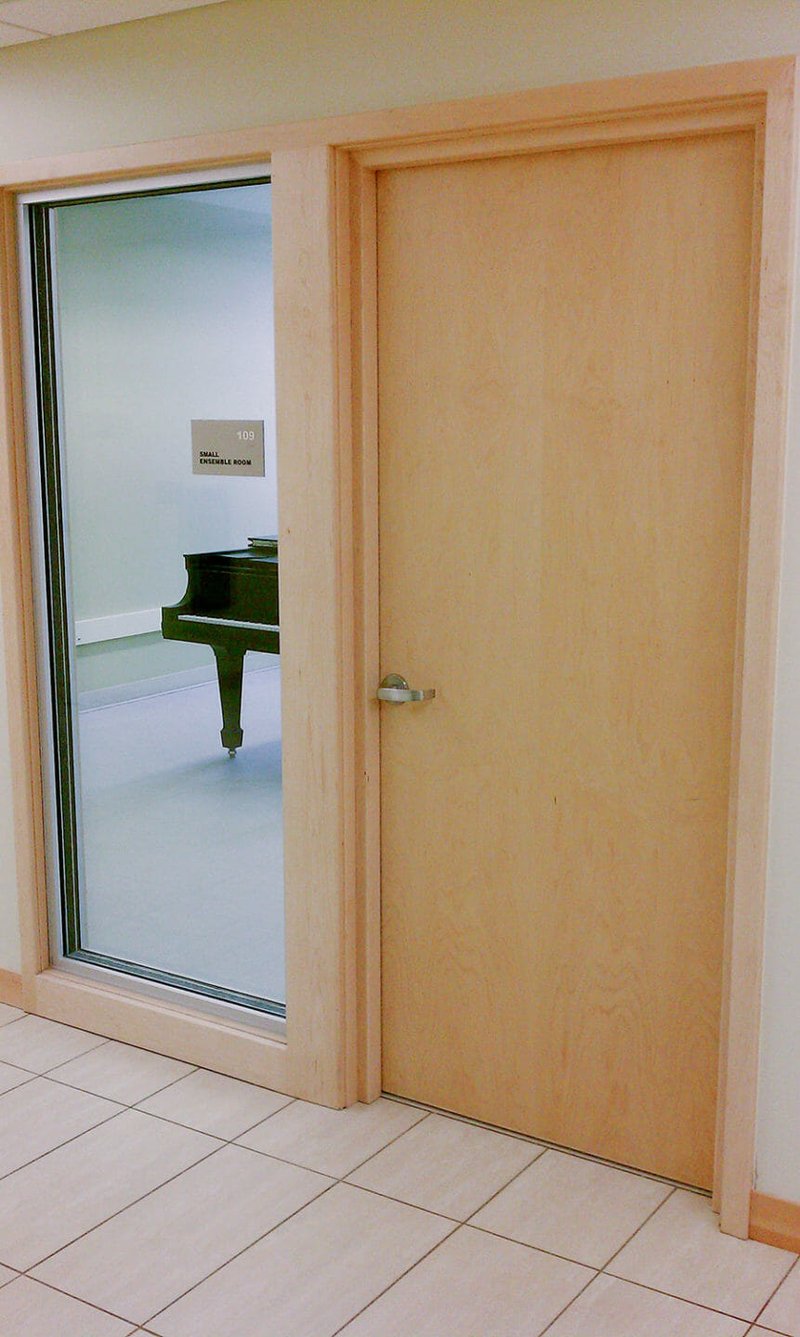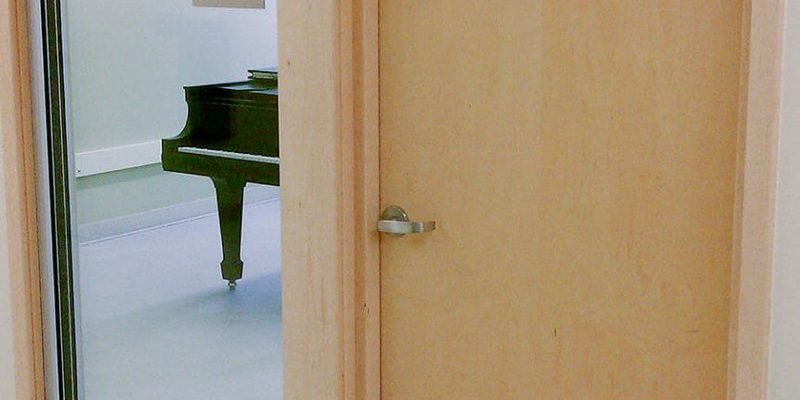
Choosing the right hardware involves more than picking out a pretty doorknob. You need to consider materials, seals, and locking mechanisms that won’t interrupt the creative flow. Think about how a good pair of noise-canceling headphones works; they block out the external racket, letting you focus on what matters—the music. Similarly, your doors should create a sound-insulated sanctuary. Let’s dive into how to select the best hardware for your studio’s interior doors.
Understanding the Importance of Acoustic Seals
Acoustic seals are the unsung heroes of soundproofing. These specialized seals are designed to minimize sound transmission through the gaps around your doors. Picture them as the weatherstripping for your sound studio doors. Just as you wouldn’t want a draft blowing through your cozy room, you don’t want sound seeping in from the outside.
When you’re setting up a studio, you might face external noise like traffic, loud neighbors, or even household sounds. Acoustic seals help combat these distractions. They fit snugly around the door frames, creating a barrier that significantly reduces sound travel. With proper installation, these seals ensure that what happens inside remains undisturbed by the outside world.
It’s worth noting that not all seals are created equal. High-density materials like rubber and foam are popular choices, as they provide better sound absorption and blocking capabilities. So, it’s essential to invest in quality acoustic seals to get the most from your studio.
Choosing the Right Door Material
The type of door material you select directly impacts the overall sound isolation. Solid core doors are often preferred in sound studios over hollow core doors. Why? Solid core doors are heavier and denser, which helps prevent sound from passing through.
Imagine trying to create a quiet environment with a paper-thin door. Every creak and whisper would echo through the room. On the flip side, a solid core door can significantly dampen sound waves, providing a much quieter space for recording or mixing.
You might also want to consider materials like fiberglass or steel for even greater soundproofing. Several manufacturers offer soundproof doors equipped with acoustic features, specifically designed for studios. They can be a bit pricier, but think of them as an investment in your art.
Exploring Door Hardware Options
Once you’ve settled on the door itself, it’s time to explore various door hardware options. This includes hinges, locks, and handles—all of which can contribute to the overall sound control in your studio.
For instance, consider heavy-duty hinges that can support the weight of a solid core door. Regular hinges may not hold up well over time, and you don’t want to deal with a sagging door that compromises your sound quality.
Additionally, the type of lock you choose matters too. A good deadbolt lock can not only secure your space but also provide added density around the door edge, which helps with sound isolation. And don’t forget about handles; you’ll want something that’s easy to operate but also complements the aesthetic of your studio.
Installing Acoustic Seals Properly
So, you’ve chosen your door and hardware. Now comes the crucial step: installation. Proper installation of acoustic seals is vital to ensure they function effectively. One key aspect is making sure the seals fit snugly without any gaps.
Start by measuring the door frame accurately. Then, cut the seals to the appropriate length, adhering them around the frame. It’s often helpful to use a caulking gun for precision. Make sure they’re positioned where the door meets the frame for maximum effectiveness. This part is crucial; a poorly fitted seal can allow sound to slip through like water through a sieve!
Remember to test the seal by closing the door and listening for any sound leaks. If you can hear external noise, you might need to readjust or replace the seals. It’s worth the effort to ensure a quiet recording environment.
Considering Additional Soundproofing Techniques
While choosing the right hardware is essential, you might benefit from additional soundproofing techniques. One popular method is adding mass-loaded vinyl (MLV) on your studio walls. This heavy material adds more density and can significantly help in soundproofing.
Another option is to install acoustic panels on your walls, which absorb sound waves and reduce echo within the room. You might even consider using double doors; having an extra layer adds another barrier against noise, greatly enhancing your studio’s sound isolation.
Each of these methods can complement your door and hardware choices, creating a comprehensive soundproofing strategy for your space. Think of it like layering ingredients for a perfect cake; every layer adds to the final product.
Regular Maintenance for Optimal Performance
Once you have everything set up, don’t forget about maintenance. Regularly check the seals and hardware to ensure they are in good condition. Over time, seals can wear out or become less effective due to environmental factors.
Inspect the hinges for any signs of rust or wear. Lubricating them can also help keep your door functioning smoothly. If you notice any gaps in your acoustic seals, replace them promptly to maintain sound isolation.
A little upkeep can go a long way in preserving the quality of your sound studio. Just like you wouldn’t skip changing the oil in your car, regular maintenance of your studio’s doors will keep your creative space functioning at its best.
Finding the Right Balance Between Aesthetics and Function
Finally, as you choose hardware for your interior doors, consider the overall aesthetics of your studio. While functionality is key, you don’t want it to be an eyesore.
Opt for hardware that blends well with the design of your space. You can find a range of hardware styles, from modern and sleek to vintage and rustic. Just remember, the functionality of the door should always come first.
By balancing aesthetics with soundproofing needs, you can create a welcoming environment that inspires creativity and lets your sound shine through.
In conclusion, choosing the right hardware for interior doors in sound studios involves careful consideration of many factors, from acoustic seals to door materials and aesthetic appeal. By making informed decisions and investing in quality components, you’ll create a conducive environment for your creative pursuits. Your sound studio deserves nothing less!
